Sandstorms and Sandy Beaches
The pollination project has been gong really well. We have finished the Salix minus some observations which have been delayed due to the weather (I will explain in a bit). We had time to hand pollinate all of the supplemented Salix twice before they started to become unreceptive. This was a race because once we started to pollinate one a second time we had to make sure we got all the sites in a second time or else the data would not be consistent. The Vaccinium we only had time to supplement once before it started to fruit, but we are done with all of those observations. Currently baby blueberries are showing up everywhere. Right now they are a green or reddish color. I have a couple of days left and I want to eat a blueberry before I leave even if they will not be ripe.
http://
I explained how we hand pollinated the willow and blueberry in previous journals, but I had not pollinated Nivi yet so I could not explain. The Nivi is definitely the most interesting and exciting. I feel like the pollination process has gotten easier, not just because of experience, but because the scale of the object is getting bigger.
http://
Pollination of Nivi has many steps. We had already found the locations and tagged the flowers just like previous locations. These flowers really like sandy beaches close moving water, so the sites are always very nice. Just like the other two plants we collect pollen, but with Nivi we collected the stamen with the pollen and put them in plastic tubes. Usually we collected the stamen of 5-10 plants (compared to 180 Vacc blooms a piece!) that were at least 20 paces away. We had to collect the pollen from different sections of flowers so that the genes would not be all the same.
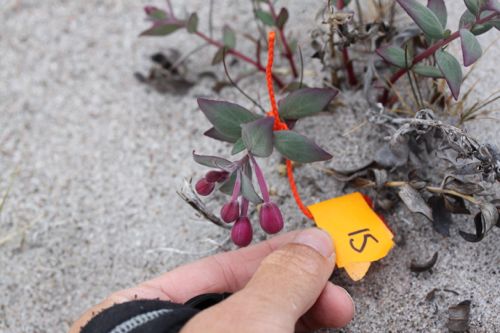
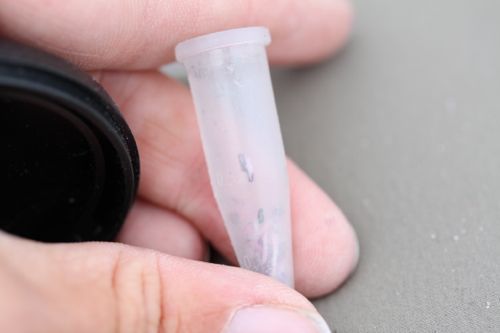
Something interesting about plants is that sometimes a certain vibration will make plants release pollen. Christine stated that a tuning fork and a vibrating stick had been used before, but we are using electric toothbrushes. This is a fun step because you place the tube on the toothbrush and you can see the stamen jumping around and the pollen becoming loose.
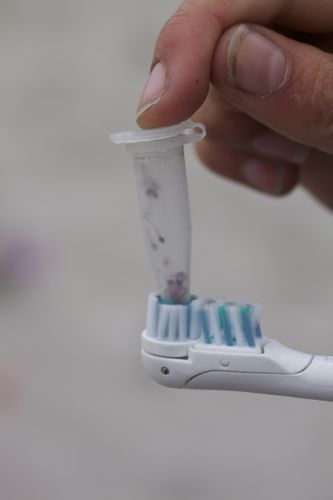
After the pollen is loose you find the first marked flower and make sure a flower is receptive. If the flower is receptive it will have an opened stigma that looks like a peeled back banana skin. If the flower is not receptive nothing it done with that plant for now. It is common for Nivi to be releasing pollen but not receptive (yet) because the plant does not want to be pollinated by itself. Instead the plant produces pollen which is then removed by wind or a pollinator. After a couple of days the stigma opens up and will hopefully receive other plant's pollen.
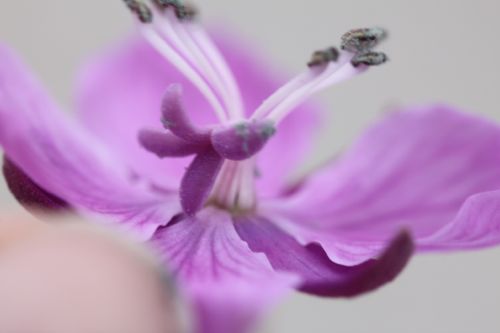
After we have looked at all the flowers and determined which are receptive we paint! We do this by opening the tube of loose pollen, placing a pain brush in the pollen, and then painting the pollen onto the stigma until it is a green/gray. This is another reason this plant is fun to pollinate, because you can actually see the pollen sticking to the stigma. After the plant is pollinated we make a small mark letting us know the flower has been pollinated. This way when we come back we know which have been pollinated before so that we can record which have been pollinated multiple times. Of course you need to write this all down in the science journal!
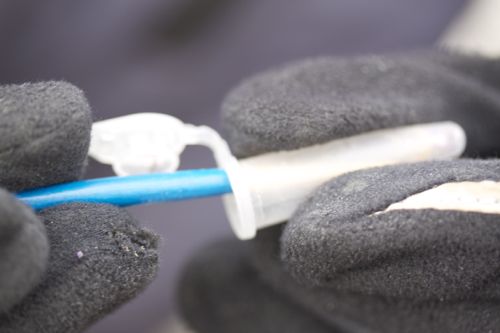
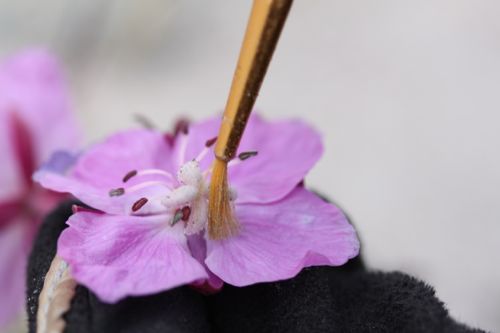

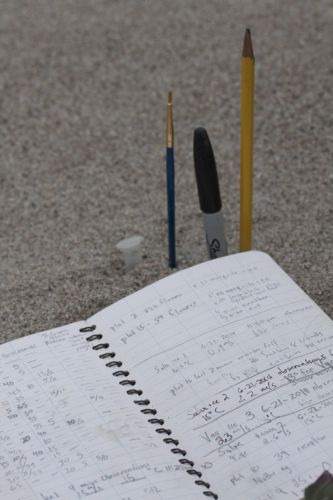
Finally, we supplement the bagged specimens by taking off five bags and supplementing by the same process. Afterwards the bags are placed back on. This is just a check to make sure the bags are not hurting the plants. If the bagged plants (without supplement) die but those in bags that have been supplemented live we will know that the lack of pollen is what killed the plant. if both die, then we will know the bag caused the death.
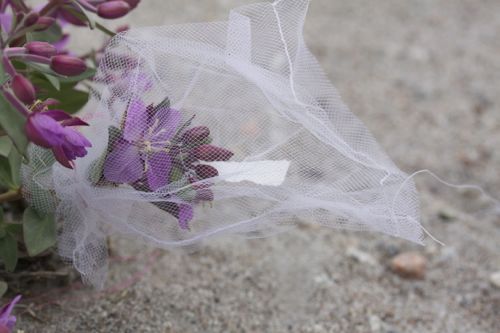
What has been the major obstacle these past couple of days has been the weather. It has become cooler, cloudier, and has rained some. While this is really not that bad (break from the mosquitos) we can't do observations because these factors inhibit pollinators. What has been bad is the wind. These past couple of days as I have been walking through the sand dunes and there are whirlwinds of sand I have felt like I am on the set of some movie. The winds have gotten up to 30 watts and several team members (including myself) have had dreams about being in a tornado while we have been asleep. I really am surprised that the wind has not swept away my tent. It has been an experience!
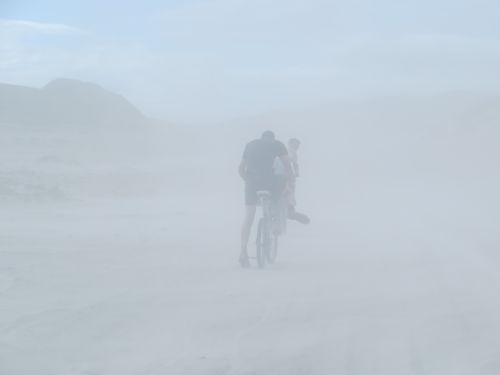
http://
Interesting Fact of the Day: This is what the mosquitos looked like after the winds did die down...
http://


Comments